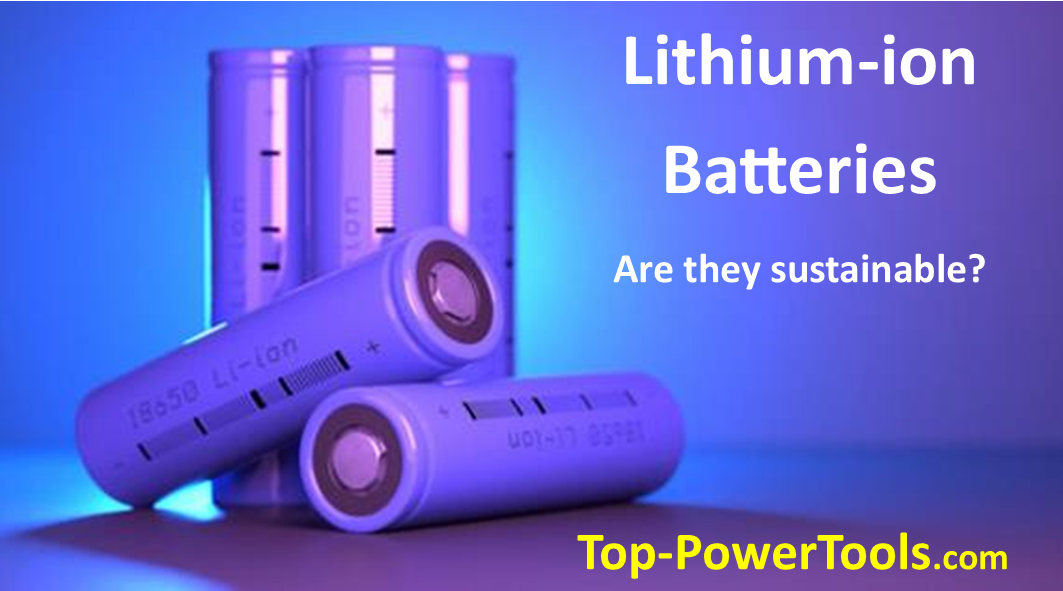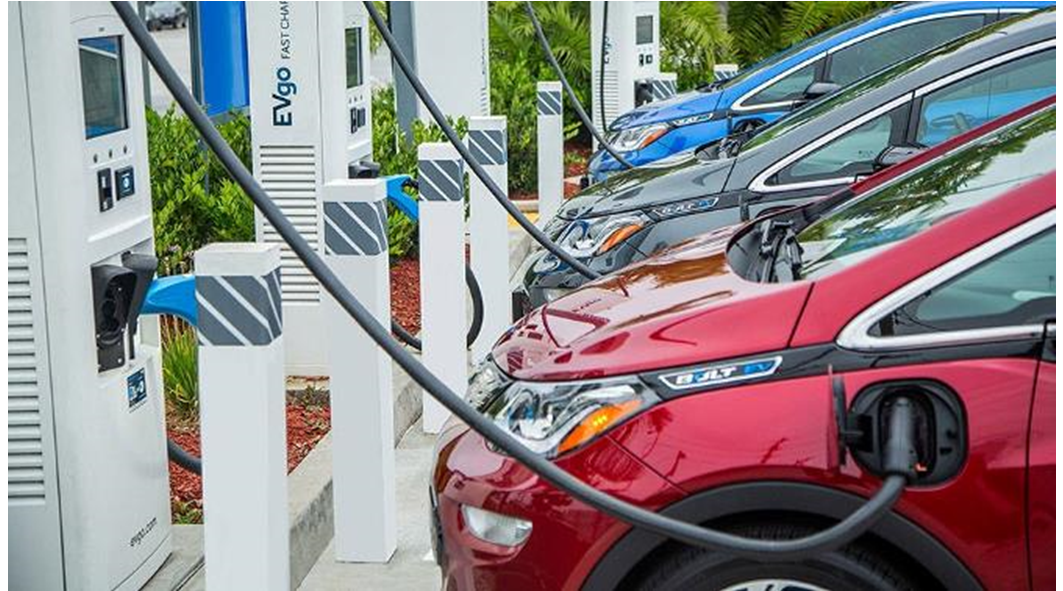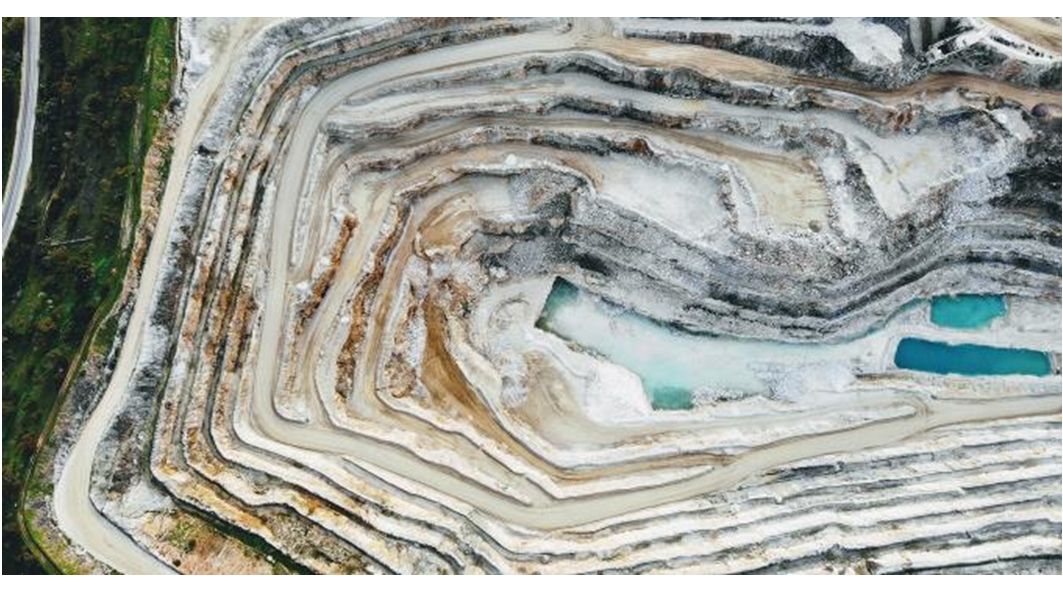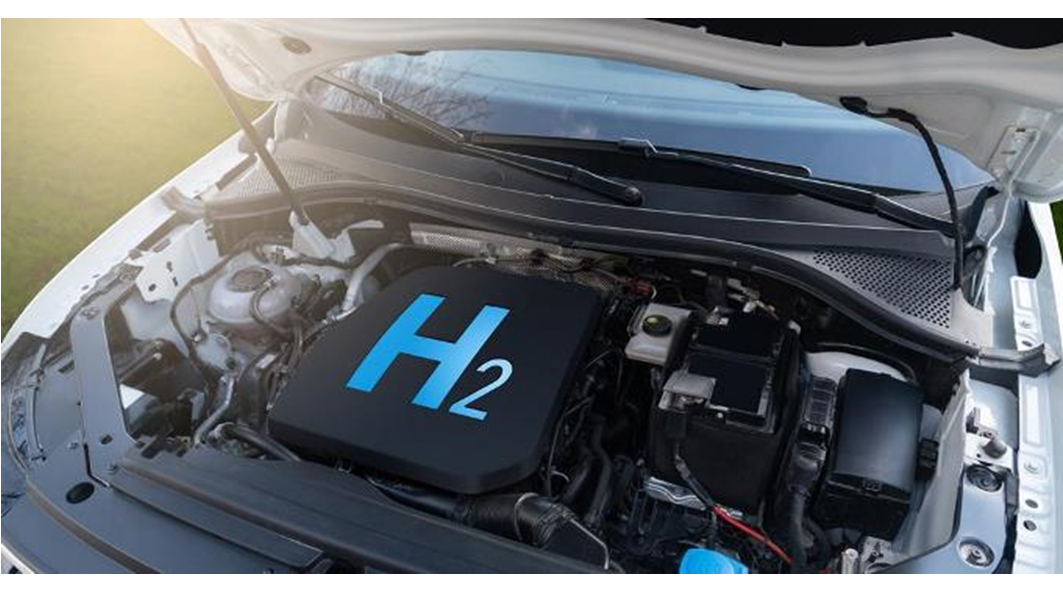Many view lithium-ion batteries as the best way to meet our environmental goals of moving away from fossil fuels toward a cleaner, electric-powered future. While this may seem like a simple and logical move, an important question remains: Is lithium really the answer to our environmental woes?
When we talk about the sustainability of lithium-ion batteries, several questions need to be answered:
- Is lithium mining bad for the environment?
- Is there enough lithium on earth to meet demand?
- Are price increases making lithium unaffordable?
- What are the alternatives?
In this article, I’m going to look for the answers to the questions surrounding sustainable energy. I have to say, during my extensive research in preparing to write this piece, I couldn’t help but get the feeling that there is a desperate need to defend the future of lithium-ion batteries. This made me wonder if those with a vested interest in the industry aren’t trying to dupe us into a false sense of security.
This is not just about sustainable battery technology, but more about the viability of the electric vehicle market. Billions have been invested in EV research and politicians have staked their reputations on the promise that EVs are going to provide environmentally friendly transport for many decades to come.
While I think that lithium-ion batteries are one of the greatest discoveries of our time, perhaps electric cars might just be the thing that tips the scale, making the future of lithium-ion batteries totally unsustainable, especially when there appear to be more viable solutions.
With the world is going EV-crazy, these might seem like pretty controversial statements. Yes, we need to reduce emissions and move away from fossil fuels. Oil is not only bad for the environment, it’s a finite resource. At some point, the oil will run out and we will need a more sustainable alternative. Then again, the minerals needed to make lithium-ion batteries (in particular, lithium and cobalt) are rare earth minerals and may run out faster than gas if we’re not careful.
Now that I’ve introduced the topic, and presented some views that may be quite unpopular, it’s time to get to the explanation.
How Lithium-ion Batteries have changed the World
In the early 1990s Sony, together with a few partners, developed the lithium-ion battery. Anyone who was not around before this momentous leap forward won’t fully understand how significant it was.
As an energy-efficient, lightweight way to store electricity, lithium-ion batteries are unbeatable. They have changed the world of portable electronics in ways that were not conceivable before they came along. The cell phone revolution of the 1990s was fueled by lithium-ion power, as are all portable electronic devices, like laptops and tablets.
Power tools have also benefited from this technology. Cordless tools are now common, thanks to the power provided by lithium. So many household appliances, like robotic vacuum cleaners, have also benefited from this technology. Portable power stations (or solar generators) are another great step forward. These too, rely on lithium-ion batteries to store power.
There can be no denying that these batteries have changed the world for the better. Lithium-ion batteries are the best technology we currently have to provide portable power storage for the products that I’ve mentioned. However, there is one big factor that I’ve not mentioned in any detail – the electric car.
Unlike all the other applications for lithium-ion batteries, EVs need a lot of power. This means larger batteries, requiring a lot more valuable (and rare) resources. The laws of supply of demand have been demonstrated dramatically over the past few years as lithium prices have been increasing at an insanely alarming rate.
In 2020, the price for a ton of lithium was $6,000, this increased to $78,032 in 2022. Lithium is 13-times more expensive than it was 2-years ago. This is an astounding and unprecedented price hike, driven entirely by the increased demand for electric vehicles. As alarming as this statistic is, it is only the tip of the iceberg.
Electric Vehicles
The International Energy Agency (IEA) has set a target of eliminating all combustion engines by 2030. Replacing gas and diesel vehicles with EVs for light and heavy transport is the way they plan to achieve this. I believe this is an unrealistic and (possibly) unattainable goal.
When we consider the massive increase in the price of lithium from 2020 to 2022, we need to consider the reasons, and how this will project into the future. In 2021, the number of electric cars in the world was 16.5 million. This is a little under 10% of the total number of cars on the road internationally, a far cry from the goal of 100% EVs by 2030.
Given that demand for lithium has increased by around 600% since 2018 because of increased EV production, the situation can only become more severe as EV manufacturing grows. Demand for lithium should increase by around 300% by 2030.
Now for the big question: Is there enough lithium on earth to sustain the EV industry?
According to Volkswagen, global lithium reserves are estimated to be around 14 million tons. To provide some context, 85,000 tons of lithium were mined in 2018. When we do the math, factoring in the availability of lithium vs increasing demand, it appears that there should be enough lithium to sustain the industry for the next 10 to 20 years, but at what cost?
There are other areas where the use of lithium-ion batteries is increasing. Renewable energy, like solar power, also requires massive battery storage capacity. If we combine all the possibilities for increased demand for battery storage capacity, a crisis seems almost unavoidable.
Apart from the availability of rare earth minerals needed for lithium production, another issue prevails. According to mining experts, it takes about 15 to 16 years to increase lithium mining capacity.
Presently, the world is falling behind in our ability to meet the demand for several of the minerals needed to manufacture lithium-ion batteries. Furthermore, demand is growing faster than we can keep up. This means that by around 2026, it will probably be impossible to supply enough lithium to meet demand. This will have an even greater impact on the price of lithium. The situation will improve gradually as existing lithium mines increase capacity and new mines come into operation. Though, this will not happen fast enough to keep up with growing demand.
A suggested solution would be to recycle lithium-ion batteries. Currently, most batteries end up in landfill sites because recycling is simply too expensive. Obviously, as raw material prices increase, the cost of recycling lithium-ion batteries will make better sense. As lithium prices continue to rocket upward, the cost of recycling will become more attractive. This, however, is not a real solution, as prices will be astronomically high by the time recycling becomes an economically viable solution.
From an economic perspective, the demand for lithium to supply the EV market seems to be a massive hurdle. Though we need to consider more than just the cost in dollars. What is the environmental cost of mining so much lithium and other rare earth minerals?
Environmental Impact of Lithium-ion Batteries
When considering the environmental impact of lithium-ion batteries, we need to closely observe all the factors, from mining to manufacturing and transporting the batteries.
Chile has the largest lithium reserves (approximately 8 million tons). Australia has the second largest supply of lithium, about 2.7-million tons, followed by Argentina with about 2 million tons. Australia is the largest producer of lithium (51,000 tons in 2018). Despite having the largest reserves, Chile only produced about 16,000 tons in 2018.
Lithium mining consumes vast quantities of water and energy. There are two methods of extracting lithium, depending on the type of deposits. In South America, lithium is found in salt flats. To extract the lithium from the underground brine, massive amounts of water are pumped from subterranean reservoirs. To produce 1 ton of lithium, 2.2-million gallons of water are required. This means that the 51,000 tons of lithium produced in Chile in 2018 used a whopping 102 billion gallons of water. In a country prone to droughts, the impact has been devastating. Essentially, the world’s largest supply of lithium is not really viable as it is destroying the groundwater supply.
Companies producing lithium-ion batteries and the IEA are not exactly forthcoming about the environmental impact of lithium mining in Chile. The popular consensus is that not enough research has been conducted, hence the environmental impact is unclear. This sounds like a convenient denial to me. The people of Chile certainly don’t share the opinion of companies like Tesla and other EV manufacturers. Although it is not widely reported in the media, protests over lithium mining in Chile are becoming common and increasingly aggressive.
In Australia, where lithium is mined from rock, another method of extraction is used. This requires heating the rock to extremely high temperatures, using vast amounts of energy. About 15 tons of CO₂ is emitted for every ton of lithium that is mined.
Another rare earth mineral used to manufacture lithium-ion batteries is cobalt. This is almost exclusively mined in the Democratic Republic of Congo (DRC). Although Tesla management has denied it, human rights violations and bad environmental practices abound in the DRC.
As one of the poorest countries, health and safety control in DRC cobalt mines does not exist. Congolese miners earn about $3.50 per day and child labor is quite common. Waste from the mines is dumped into rivers without being treated, resulting in toxic water supplies for drinking and agriculture.
If cobalt is responsibly mined, as it would be in developed countries, it will become much more expensive, pushing the price of lithium-ion batteries up even further. This is obviously something that Battery and EV manufacturers would prefer to avoid.
Once the raw materials have been mined in various countries around the world, they have to be shipped to factories in China, Europe, and the US. A container ship consumes approximately 225 tons of bunker fuel per day traveling at a normal speed of 24-knots. A 40 FT container ship has a capacity of about 25,000 tons.
In 2021, 100,000 metric tons of lithium were mined and shipped at an average of 20 days at sea. This means that just transporting the lithium needed in one year consumed 18,000 tons of fuel. This does not include transporting the other raw materials or shipping the manufactured batteries to their final destination. Quite ironic for a solution that is supposed to be eliminating the use of fossil fuel.
The next step in the environmental equation is the impact of manufacturing the batteries. Manufacturing emissions for an 80KWH lithium-ion battery (used in the Tesla Model 3) ranges from 1,600 to 2,400 metric tons of CO₂. That’s roughly the same emissions that a conventional car would produce over a distance of 5,000 miles.
Once we add together the CO₂ emissions to mine and transport the raw materials, then manufacture and transport the batteries, a Tesla Model 3 battery would have produced emissions similar to what a gas car emits to travel about 20,000 miles (by my estimation). This is before a single watt of electricity is generated to actually charge the battery.
Is there a greener alternative to lithium batteries?
If we’re simply comparing types of battery technology, then lithium-ion is as good as it gets. Responsible use of these batteries should be sustainable. The issue we’re facing is about the over-exploitation of natural resources and responsible environmental practices.
Taking EVs out of the equation should make lithium-ion batteries both sustainable and affordable. Even though I think EVs are great, we need to look at other alternatives. Apart from the sustainability of the battery technology, EVs have other drawbacks. They are expensive and, as the batteries become more costly to produce, the cars are only going to become more expensive. EVs also have a limited range and long battery charging times. This makes them only suitable for short-distance urban commuting.
While electric power is fantastically efficient for lightweight vehicles, the opposite is true for heavy vehicles. Trucks and buses are actually more efficient using an internal combustion engine.
EVs can play a practical role in reducing emissions, like city taxis and light delivery vehicles used for short-distance travel. However, a more practical and sustainable means of transport needs to be found for most of our modern needs. In particular, long-distance travel and transporting heavier loads.
So, what is the solution?
There is a source of fuel that can be utilized to drastically reduce our CO₂ emissions and it is all around us. I’m talking about hydrogen (H₂), the most abundant element in the universe. In order to understand how hydrogen can be used effectively, we need to distinguish between hydrogen fuel cells and hydrogen combustion engines. The latter, I believe, has not received the media attention it deserves.
When I Googled hydrogen cars, all search results were for articles about electric cars using hydrogen fuel cells, which can be an alternative to lithium-ion batteries for EVs. However, very little is known about hydrogen combustion engines.
I attribute the apathy surrounding hydrogen combustion to a syndrome I call Musk-O-Phoria. This is the perception created by Tesla that electric vehicles are the only solution for our future transport needs. The general public, politicians, and international policymakers (like the IEA) have all fallen for the Tesla hype – hook, line, and sinker.
If we look beyond the idiotic proposition presented by the IEA to effectively ban any type of combustion engine, we find a wonderful, practical, and affordable solution. A hydrogen combustion engine works exactly like a conventional gas engine. The only difference is that it burns hydrogen instead of gas. This requires a modification to the fuel injection system but everything else remains the same. A hydrogen combustion engine costs about the same to manufacture, making it much more affordable than an EV.
Since over 90% of the emissions from a hydrogen engine is water, it is about as eco-friendly as it gets. Moreover, hydrogen cars don’t need the expensive emission control systems used for gas engines. This saves on cost and valuable resources like platinum.
There is one obstacle preventing hydrogen from being a green energy source, but this is beginning to change. Traditionally, hydrogen has been produced using natural gas reforming which is not a very environmentally friendly process.
In more recent times, “green hydrogen” has been presented as a zero-carbon fuel. This is hydrogen produced using electrolysis. Electricity, generated by renewable sources, is used to separate hydrogen from oxygen. Basically, it uses the natural water cycle, making it completely sustainable.
Water is converted into hydrogen which is used either to generate electricity (hydrogen fuel cell) or as fuel for an internal combustion engine. In both instances, hydrogen combines with oxygen to form water. The water is not depleted, it is merely used to transfer energy. We could say that we are simply borrowing the hydrogen from water and then returning it when we are done. More importantly, we can use water from sources that are not threatened, unlike the lithium mines in Chile.
Germany has been leading the way in manufacturing green hydrogen. If the rest of the world invested as much money into producing green hydrogen as we have spent on lithium mining, there should be an abundance of green hydrogen. Electrolysis can be conducted anywhere; you only need water. This means that hydrogen can be manufactured close to the point of use, eliminating the need for expensive (and environmentally hazardous) shipping. There is no mining of minerals or drilling into the earth, so the raw material (water) is also 100% eco.
I think the biggest obstacle to green hydrogen is probably its commonsense practicality. Because water is everywhere, there is no big money to be made from hydrogen when we compare it to scarce commodities like oil or lithium. This makes it more accessible to smaller businesses, which is not in the best interests of billion-dollar companies like Tesla. With all the money that has been spent on developing and promoting electric vehicles, there is a vested interest in preventing a more practical and affordable alternative.




